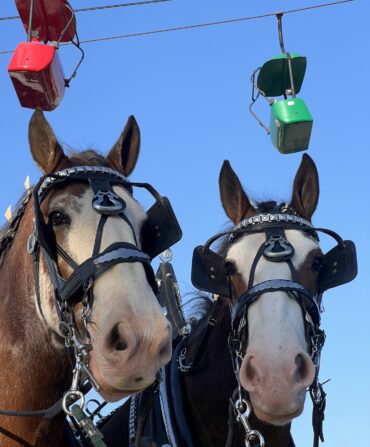For bubble bath lovers, there was Calgon—“Take me away!” For art lovers, watching Bob Ross paint had the same mental-zen-garden effect.
The puffy-haired PBS star became famous for teaching the masses how to create “happy little tree” masterpieces in less than thirty minutes on his instructional series The Joy of Painting, which ran from 1983 to 1994. “Traditionally, art has been for the select few,” Ross told the Orlando Sentinel in 1990. “We have been brainwashed to believe that Michelangelo had to pat you on the head at birth. Well, we show people that anybody can paint a picture that they’re proud of. It may never hang in the Smithsonian, but it will certainly be something that they’ll hang in their home and be proud of. And that’s what it’s all about.”

Bob Ross name and images are registered trademarks of Bob Ross Inc. All Rights Reserved. Used with permission
Ross died in 1995, but in honor of what would have been his seventy-fifth birthday, on October 29, here are five things about Ross that might make you smile.
He was Southern!
Ross was born in Daytona Beach, Florida, and raised in Orlando, but he moved away to Alaska in 1963 after he joined the United States Air Force. The landscape inspired him (mountains and snowy evergreens were constant themes in his paintings over the years), and it was there that he began using a “wet on wet” oil method employed by the German painter Bill Alexander, his PBS forbearer. The quick-fire technique—brushing a layer of paint over wet paint, instead of letting it dry first—allowed Ross to finish pieces while on his lunch break.
It’s a perm!
It’s true. Those curls didn’t come naturally. Ross’s signature coif was instead born of necessity: When he started painting full-time, Ross couldn’t afford regular haircuts. A perm let him set it and forget it. But the real surprise: Ross hated the style. To adapt the Southern mantra, it seems Ross’s situation became, “The higher the hair, the closer to God-and-now-I-can’t-get-rid-of-this-because-the-fans-love-it.”
He got a kick out of country music.
Ross even made it to the Grand Ole Opry stage—the legendary musician Hank Snow invited him up during a 1987 Nashville performance. Ross received a standing ovation.
His appreciation of nature extended beyond “happy little trees.”
Ross rarely painted animals. (According to the statisticians at 538, a breakdown of The Joy of Painting’s episodes revealed he most often depicted trees, clouds, and mountains.) But when Ross returned to live in the Orlando area in his late forties, he created an animal sanctuary in his backyard. There, he nursed injured squirrels and birds back to health.
You can still bliss out to Bob today.
Neither Ross’s episodes nor the 30,000 or so paintings he whipped up over the years funded his multi-million-dollar empire—he worked for free, and he donated most artworks to PBS stations. Instead, his income came from the likes of selling art supplies and instructional goods, and certifying instructors to teach his methods, each of which is still sold or offered today. But you can also watch the man in action: Ross’s lesser-known series, Beauty Is Everywhere, is available to stream on Netflix. So queue up an episode and relax. Bob, take us away!







